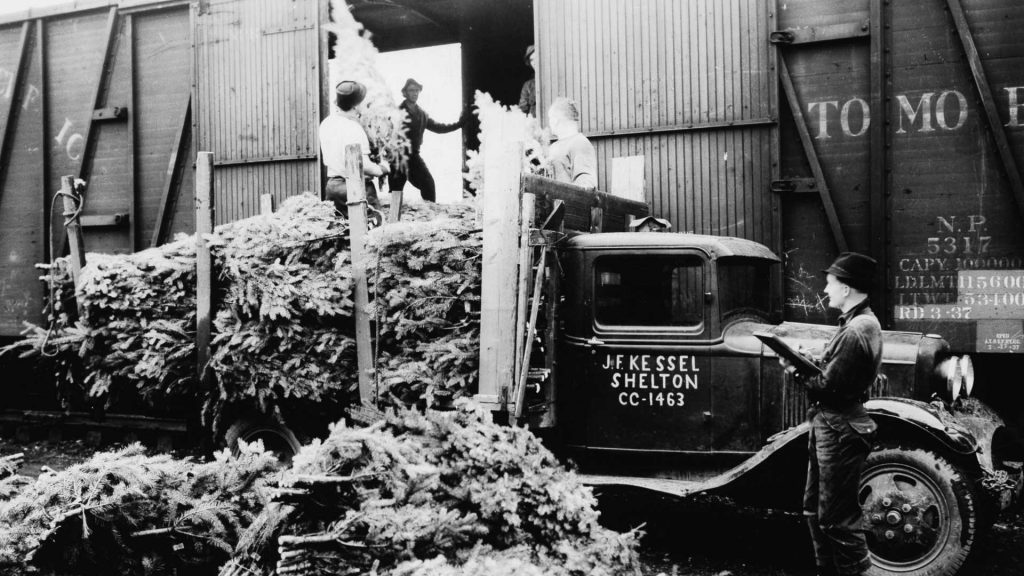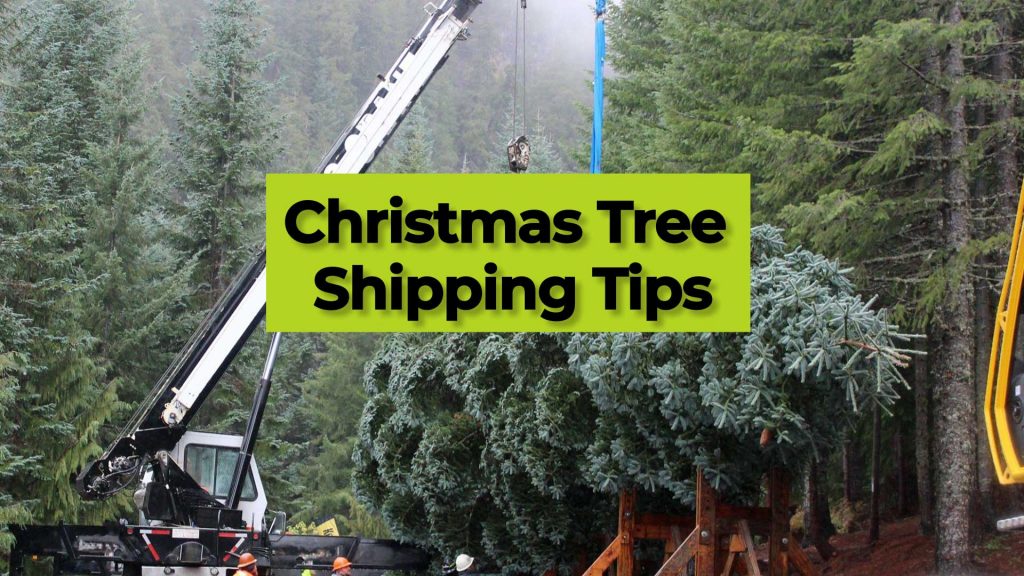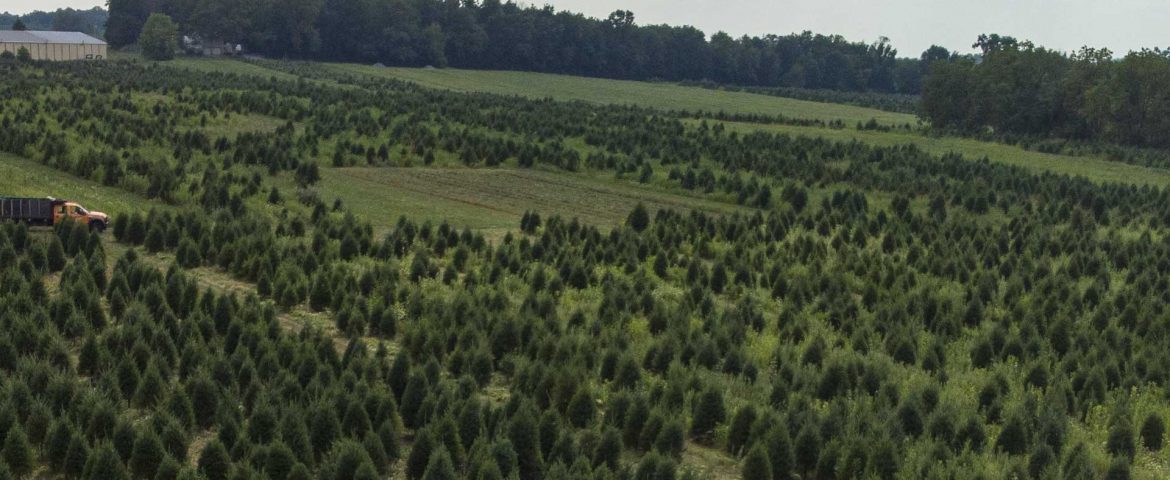Americans buy over 25 million Christmas trees yearly!
That’s a lot of trees that need to be shipped from Christmas tree farms across the US to retailers and tree lots.
While this might seem awful at first glance, these trees are all farmed and grown specifically to be cut, if they land wasn’t being used for Christmas tree production it would simply be used for some other form of agriculture. At any one time in the US, over 300 million trees are growing on around 350,000 acres of land which generate about 2 billion dollars of economic activity.
Much of the US’s Christmas tree production is based in the Pacific Northwest, North Carolina, Pennsylvania, and Wisconsin, although smaller numbers of trees are farmed in many other states. The climate of the production area large drives the species planted, which is commonly Fraser fir, Douglas fir, Balsam fir, black spruce, and white spruce. The Douglas Firs are traditionally produced in the Pacific Northwest, while Balsam firs are commonly grown in the Northeast. Both Black Spruce and White Spruce are generally grown further North, including the most Northerly sections of the US and much of Canada. Fraser firs however are commonly grown in the higher elevation areas of the Appalachian mountains including NC. Each species features slightly different aesthetics, aromas levels, and needle retention.
So how are these millions of Christmas trees brought to market across the country?
Keep in mind that as soon as a tree is cut, it’s clock is ticking as it starts to dry out.
Starting at the tree farm, trees are loaded onto various types of trucks or even containers if they are being transported outside the continental US. Many Christmas tree farms are quite small but some are larger operations. Each farm will likely prefer to ship their trees in a slightly different fashion. Most will bale the trees with some sort of netting, then load them into a truck. Often dry van trucks are used for shorter hauls, but refrigerated trailers are also commonly used for longer hauls to Florida or somewhere like Arizona to make sure the trees stay as fresh as possible. Some shippers for very short runs, also like to use various types of open trailers or flatbeds, however, on longer journeys, this could create problems for the trees.
Much of agriculture shipping volume is heavily seasonal which means the “on season” creates peak volume for a certain industry or crop, which always drives truckload pricing up. So in short if you are shipping Christmas trees, prepare to pay a higher price than you might think you would for normal dry van freight. Also, talk with your logistics providers as early as possible to plan capacity requirements even if it is an estimate. Often the peak for Christmas trees is at the very end of November as retailers want to make sure they have inventory available as shoppers start buying trees right after Thanksgiving.

In years past, carload rail freight was commonly used to move Christmas trees as the above photo depicts. This carload is being loaded on a rail spur in the pacific Northwest, in what appears to be a Northern Pacific boxcar, which is then being shipped to Atlanta where it will be unloaded the trees trucked to their final destination. While not too many are likely still moved by carload rail freight, intermodal presents an attractive shipment option for trees moving long distances. Dry van 53 ft containers are generally used, while for international shipments or shipments to outlying US territories, 40ft containers would be handled by the ocean carrier. Intermodal presents shippers moving freight longer distances to reduce their shipping costs while maintaining truck like levels of service. For Christmas tree shippers, a mix of truck and intermodal shipping will hedge freight costs and optimize freight capacity based on need and length of haul. Just like with trucking, often containers are chilled and even loaded with ice to keep the trees as fresh as possible on their trip across the country.
How to Ship Christmas Trees, below are our top tips for shipping Christmas Trees

Top Tips for Shipping Christmas Trees
Plan Early
Work with your logistics partners to plan the timing and quantity of transportation needed as early as possible, this will ensure that everyone is on the same page and capacity is properly allocated.
Shipping Requirements
Clearly communicate your shipping requirements, do you want to use dry vans, reefers, containers with ice? All of this will need to be planned well ahead of time in order to mitigate high transportation costs.

Get Drivers in and out Quickly
Often for Christmas tree shippers, the standard 2-hour window, might not be enough time to properly load and ice a truckload or a container load of trees. You’ll build much better relationships with your logistics partners if you adhere to the loading and unloading time you requested. Scheduling a 3-hour window is fine, with an extra fee, but just make sure this was planned ahead of time. If you are shipping lots of loads, working with your partners to put together a drop trailer plan might be the best option.
Hedge Capacity
This year is a tight market as shippers are finding out, consider mixing intermodal into the mix on longer lanes in addition to your trucking partners. This will reduce freight rates and be a source of extra capacity.
Careful handling
The goal should be to reduce stops and handling as much as possible. Not only will this reduce potentially damaging limbs and needles, but it will also reduce overall transportation costs as fewer dwell time needs to planned and compensated for.
Christmas Tree Association Facts
Zmodal provides comprehensive supply chain solutions that are data based and focused on optimizing your supply chain logistics plan for better reliability and efficiency. We focus on a multimodal approach to building resiliency that is backed by a first class team that provides 24/7 support and the technology to keep your supply chain connected and visible. Our technology provides shippers easy access to convert over the road freight to intermodal. If you want to talk or want a completely free initial consultation, give us a shout!



